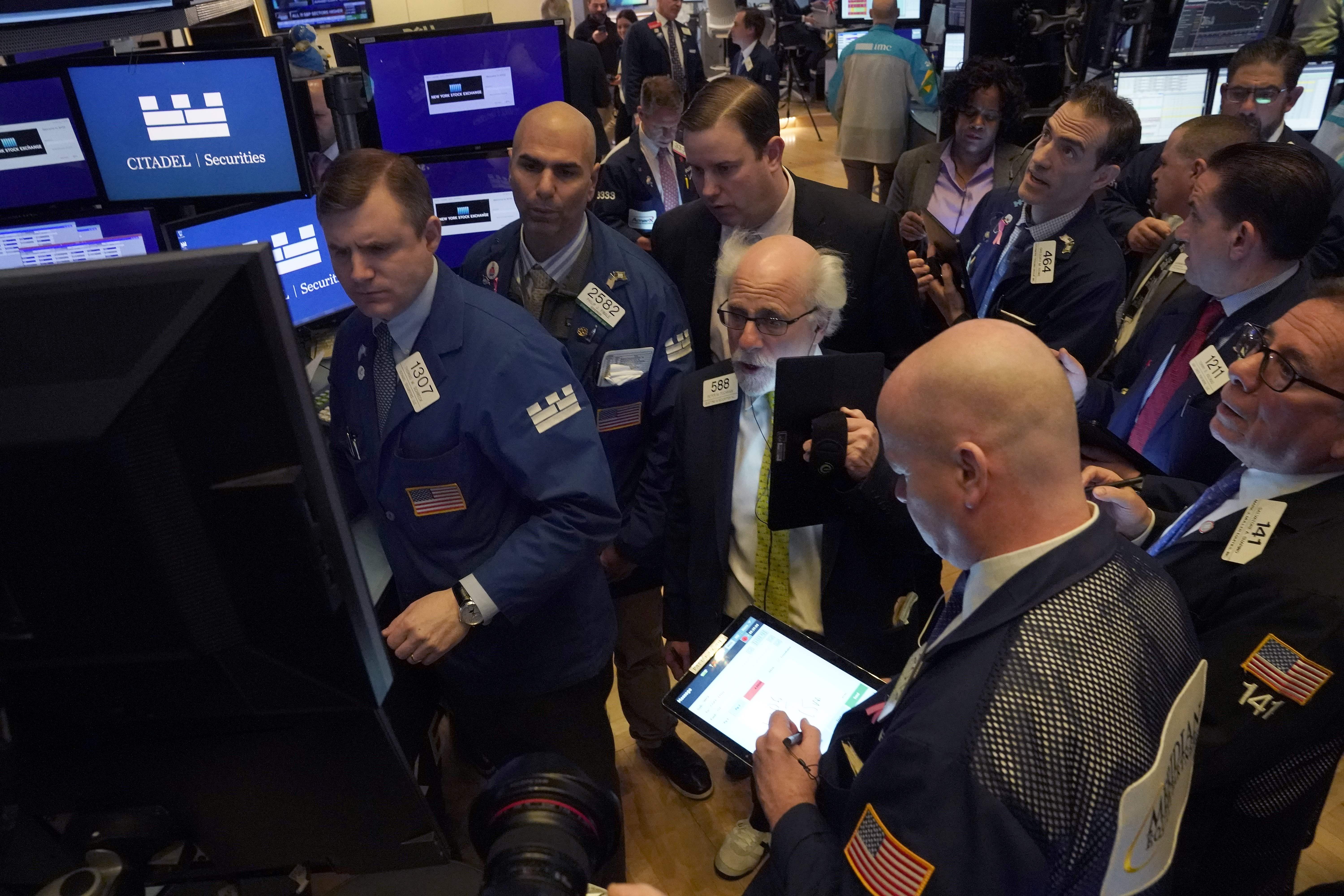
1. Dow set to plunge at Monday's open
Traders work on the floor of the New York Stock Exchange during the opening bell on March 10, 2020 in New York.
Timothy A. Clary | AFP | Getty Images
U.S. stock futures were "limit down" 5% on Monday morning despite the Federal Reserve's announcement Sunday of a massive monetary stimulus campaign and an interest rate cut to zero.The Fed's moves, ahead this week's regularly scheduled policy meeting, were aimed at supporting the economy as the coronavirus crisis deepens in the U.S. and around the world. The exchange-traded funds that track the Dow Jones Industrial Average and S&P 500, which have no mechanisms to curb downside, were off more than 10%. When the regular session begins at 9:30 a.m. ET on Wall Street, the 7% down level on the S&P 500 would trigger the first of three "circuit breakers," pausing trading for 15 minutes.
Friday's snapback rally of over 9% from Thursday's plunge, which was the worst session since the "Black Monday" market crash in 1987, seems like a distant memory. Monday's expected decline would push the S&P 500 and the Dow further into a bear market, which is defined by a drop of at least 20% from recent highs. They hit record highs just last month.
2. Fed cuts rates and launches QE
Federal Reserve Chair Jerome H. Powell announces a half percentage point interest rate cut during a speech on March 3, 2020 in Washington, DC.
Mark Makela | Getty Images
The Fed on Sunday cut rates by 1% in an emergency move down to 2008 financial-crisis levels of 0% to 0.25%. Rates during and after the crisis stayed near zero for seven years before the first hike in 2015. In another action from the financial-crisis playbook, the Fed launched a massive $700 billion quantitative easing program. President Donald Trump said Sunday he was "very happy" with the announcement, adding, "I think that people in the markets should be very thrilled." The Fed's announcement came after it issued another emergency rate cut earlier this month. The IMF said it "stands ready" to use its $1 trillion lending capacity to help countries that are struggling with the economic impact of the coronavirus. On Capitol Hill, the GOP-controlled Senate has yet to schedule a vote on the nation's second emergency coronavirus bill, which passed the Democratic-controlled House last week.
3. CDC steps up coronavirus recommendations
A man wearing a protective mask walk around the Broadway Theatre that Broadway productions have been suspended on March 12, 2020 in New York City.
John Lamparski | NurPhoto | Getty Images
With U.S. coronavirus cases spiking to more than 3,770 with 69 deaths, the Centers for Disease Control and Prevention is urging people across America to cancel or postpone events with 50 or more attendees for the next eight weeks. The guidance doesn't apply to schools, universities or businesses. However, many public schools and colleges are closed, shifting learning online. Many companies are on work-for-home polices. New York City and Los Angeles closed bars and limited restaurants to takeout and delivery. The governors of Ohio and Illinois have also closed restaurants and bars to everything but delivery and takeout. The bar closures come before Tuesday's St. Patrick's Day, traditionally one of their busiest days of the year.
4. Many European countries on lockdown
Daily life in Venice, Italy, on March 12, 2020 after the lockdown decided by Premier Giuseppe Conte all around Italy.
Giacomo Cosua | NurPhoto | Getty Images
Across Europe, Italy, France and Spain have taken more severe steps, closing all shops except those that are essential to daily life, such as groceries and pharmacies. Coronavirus cases in Italy surged to over 24,700 with 1,809 deaths. Italy is by far the biggest hot-spot outside China, where the outbreak originated in December. China still has nearly half the global cases, which increased to nearly 170,000 with 6,513 deaths. More than 77,000 infected patients around the world are listed as recovered. Apple is closing all of its stores outside of Greater China until March 27 to reduce the risk of the coronavirus spreading. Nike is also temporarily closing all of its stores in the U.S. and in other parts of the world.
5. Biden and Sanders debate one on one
Democratic presidential hopefuls former US vice president Joe Biden (L) and Vermont Senator Bernie Sanders (R) take part in the 11th Democratic Party 2020 presidential debate in a CNN Washington Bureau studio in Washington, DC on March 15, 2020.
Mandel Ngan | Getty Images
Former Vice President Joe Biden and Sen. Bernie Sanders, the last two major candidates vying for the Democratic presidential nomination, debated Sunday night under the shadow of the coronavirus pandemic. The showdown, ahead of Tuesday's key nominating contests in Arizona, Florida, Illinois and Ohio, had moments of unity, with Biden and Sanders going after Trump, but they also clashed on the typical array of party flash points such as health care. Biden, ahead in delegates, is likely to be named the Democratic nominee to take on Trump unless something dramatic changes about the state of the race. Sanders, ideologically to the left, gave no sign that he intends to give up the nomination without a fight.
— Follow the markets in real-time all day long with CNBC's market blog online. Click here.
https://news.google.com/__i/rss/rd/articles/CBMiYWh0dHBzOi8vd3d3LmNuYmMuY29tLzIwMjAvMDMvMTYvNS10aGluZ3MtdG8ta25vdy1iZWZvcmUtdGhlLXN0b2NrLW1hcmtldC1vcGVucy1tYXJjaC0xNi0yMDIwLmh0bWzSAWVodHRwczovL3d3dy5jbmJjLmNvbS9hbXAvMjAyMC8wMy8xNi81LXRoaW5ncy10by1rbm93LWJlZm9yZS10aGUtc3RvY2stbWFya2V0LW9wZW5zLW1hcmNoLTE2LTIwMjAuaHRtbA?oc=5
2020-03-16 13:18:38Z
52780668791617




